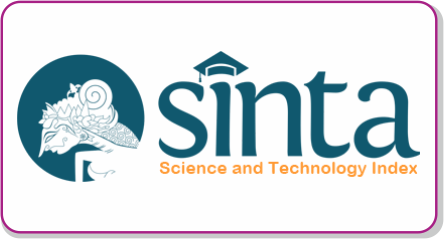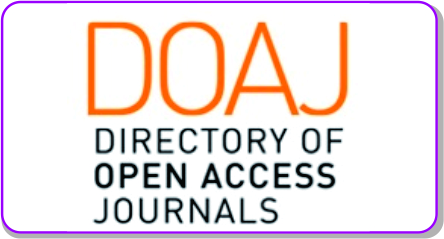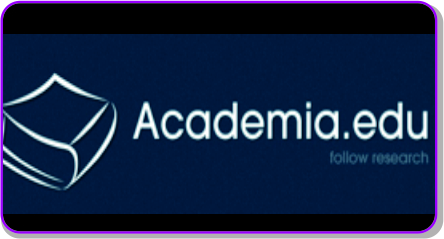KEWIBAWAAN ( HIGH TOUCH) SEBAGAI MEDIA PENDIDIKAN KARAKTER
DOI:
https://doi.org/10.30983/it.v1i1.329Keywords:
Authority, Educational Media, CharacterAbstract
Memahami pendidikan yang semakin hari semakin kompleks baik aspek pendidik, peserta didik, materi, media, metode dan lingkungan pendidikan diperlukan pula diperlukan pula pemahaman yang semakin komprehensif dari aspek di atas, namun tidak semua aspek di atas dapat dijelaskan dalam tulisan singkat ini tetapi dapat dijelaskan kewibawaan sebagai aspek media memiliki keterpautan dengan karakter peserta didik yang dibutuhkan karena kewibawaan itu mengandung keteladanan, kasih sayang, kelembutan, tindakan tegas yang mendidik, disiplin dan demokrasi yang terjelma dalam proses pembelajaran yang dilakukan oleh pendidik agar peserta didik memiliki kekuatan karakter sebagaimana digambarkan oleh berbagai pakar antara lain Dapat dipercaya (trustworthiness), 2) Rasa hormat dan perhatian (respect), 3) Tanggung jawab (responsibility), 4) Jujur (fairness), 5) Peduli (caring), 6) Kewarganegaraan (citizenship), 7) Ketulusan (lonesty), 8) Berani (courage), 9) Tekun (diligence), dan 10) Integritykter. Sehingga peserta didik memiliki kesadaran pemahaman yang tinggi, kepedulian dan komitmen untuk menerapkan kebaikan dalam kehidupan sehari-hari, sehingga terwujud perilaku baik, jujur, bertanggung jawab, hormat terhadap orang lain dan nilai-nilai karakter mulia lainnya. Understanding the increasingly complex education of both aspects of educators, learners, materials, media, methods and educational environment is also required also an increasingly comprehensive understanding of the above aspects, but not all aspects of the above can be explained in this brief article but can be explained Authority as a media aspect has a link with the character of learners that is needed because it contains exemplary authority, compassion, tenderness, decisive actions that educate, discipline and democracy are incarnated in the learning process undertaken by educators so that learners have the power of character as described by various Experts trustworthiness, 2) Respect and respect, 3) Responsibility, 4) Fairness, 5) Caring, 6) Citizenship, 7) Sincerity (lonesty), 8) Courage, 9) Diligence, and 10) Integritykter. So that learners have a high awareness of awareness, awareness and commitment to apply good in everyday life, so as to manifest good behavior, honest, responsible, respect for others and other noble character values.References
Barizi Ahmad. 2011. Pendidikan Integratif Akar Tradisi dan Integrasi Keimuan Pendidikan Islam. UIN Malang Press Bruce Joyce. (2009). Models of Teaching, Model-model Pengajaran, Yogyakarta: Pustaka Pelajar.
Darmiyati Zuchdi. 2010. Humanisasi Pendidikan. Yogyakarta: Bumi Aksara
Darul Ilmi. 2012. Pendekatan Humanistik Religius Dalam Pembelajaran. STAIN Bukittinggi Press
E. Mulyasa. 2011. Manajemen Pendidikan Karakter. Jakarta: PT. Bumi Aksara
_____, 2015. Revolusi Mental Dalam Pendidikan. Bandung: PT. Remaja Rosdakarya
Lickona Thomas. 2013. Educating For Characteristic Mendidik Untuk Membentuk Karakter. Jakarta: Bumi Aksara.
Mohammad Ali, 2011, Memahami Riset Prilaku dan Sosial, Bandung: Pustaka Cendekia
Muslich Masnur.2011.Pendidikan Karakter Menjawab Tantangan Krisis Multimensional, Jakarta: Bumi Aksara.
Prayitno,2009, Dasar Teori dan Praksis Pendidikan. Jakarta: Grasindo
Tim KBBI. 2001. Kamus Besar Bahasa Indonesia. Jakarta: Gramedia Pustaka Utama
Tim KBBI.2007 Kamus Besar Bahasa Indonesia, Jakarta: Balai Pustaka
Undang-undang Nomor 20 Tahun 2003 Tentang Sistem Pendidikan Nasional
Undang-undang Nomor 14 Tahun 2005 Tentang Guru dan Dosen
Wolf Shelby A. 2004. Interpreting Literature with Children. London, Lawrence Erlbaum associates, publishers.
Waini Rasyidin. 2014. Pedagogik Teoritis dan Praktis. Bandung: PT. Remaja Rosdakarya
Zamroni, 2000, Paradigma Pendidikan Masa Depan, Yogyakarta: Bayu Indra Grafika
Downloads
Submitted
Accepted
Published
Issue
Section
License
Authors who publish with this journal agree to the following terms:
- Authors retain copyright and grant the journal right of first publication with the work simultaneously licensed under a Creative Commons Attribution-ShareAlike 4.0 International License that allows others to share the work with an acknowledgment of the work's authorship and initial publication in this journal.
- Authors are able to enter into separate, additional contractual arrangements for the non-exclusive distribution of the journal's published version of the work (e.g., post it to an institutional repository or publish it in a book), with an acknowledgment of its initial publication in this journal.
- Authors are permitted and encouraged to post their work online (e.g., in institutional repositories or on their website) prior to and during the submission process, as it can lead to productive exchanges, as well as earlier and greater citation of published work (See The Effect of Open Access).













